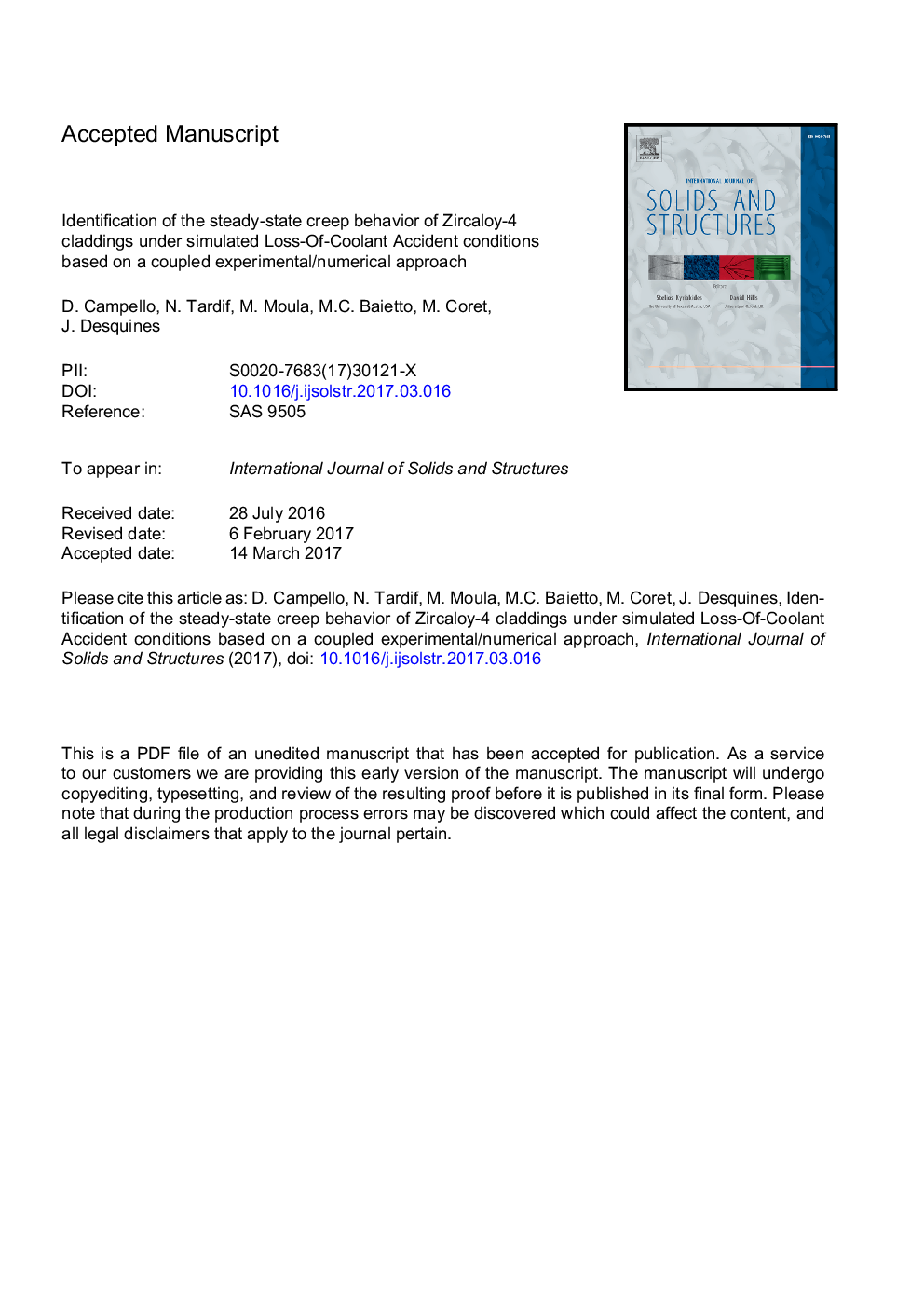| Article ID | Journal | Published Year | Pages | File Type |
|---|---|---|---|---|
| 4922565 | International Journal of Solids and Structures | 2017 | 36 Pages |
Abstract
Ballooning tests were performed on tubular specimens. A heterogeneous thermal mechanical loading was applied to the specimen. The resulting thermal and kinematics fields were measured using full-field optical measurements. Then a Finite Element model was updated to determine a constitutive Norton creep law fitting the kinematic fields measured by way of digital image correlation (DIC). The following methodology enables a significant reduction in the number of tests used for the mapping of creep mechanisms depending on stress and temperature conditions. The results of nine experiments covering stresses from 7 to 45 MPa and temperatures varying from 745 to 850 â°Câ are detailed. In the α-phase domain, the transition from low Norton exponents (â¼ 1) to higher ones (â¼ 4-5) is observed at a von Mises stress of 26 MPa. The activation energies are consistent in the α-phase domain. For modeling purposes, several tests (T < 810 â°C) were then correlated. Three constitutive laws, depending on the stress and creep-rate levels, were determined. Norton exponent and activation energy consistent with the superplasticity observed by Garde et al. were identified in the early stage of the two-phase domain.
Keywords
Related Topics
Physical Sciences and Engineering
Engineering
Civil and Structural Engineering
Authors
D. Campello, N. Tardif, M. Moula, M.C. Baietto, M. Coret, J. Desquines,
